Scavenger Pipes

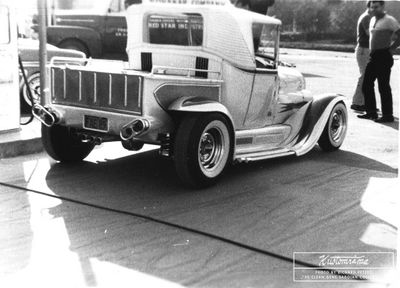
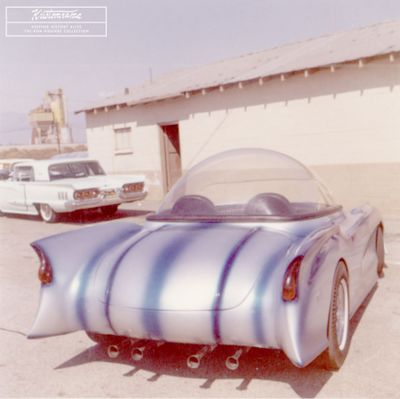


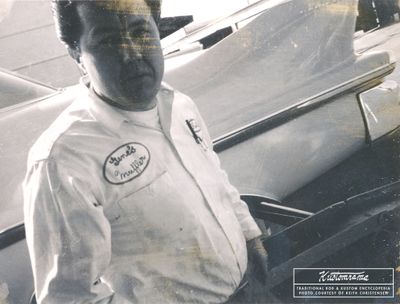


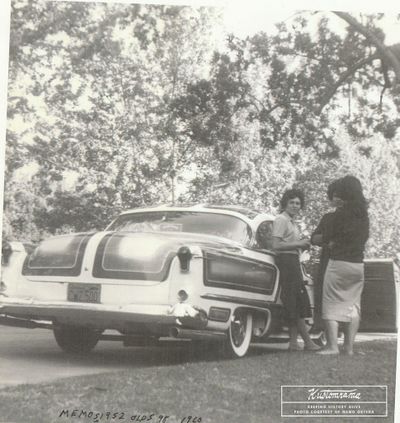


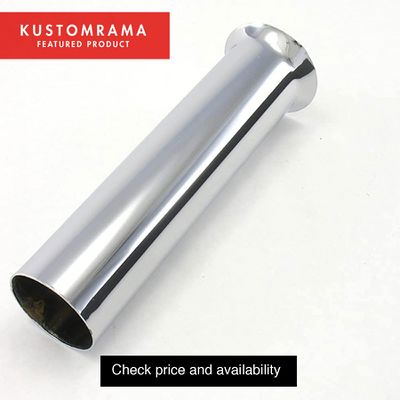


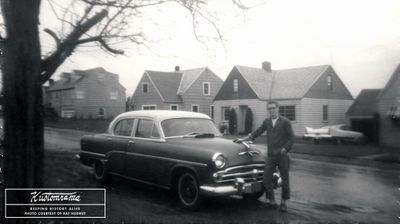



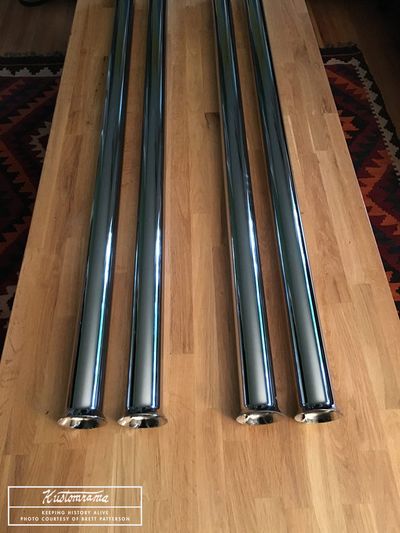

Scavenger Pipes was a popular custom feature in the early 1960s. Kustomrama contributor Howard Gribble saw a lot of cars running these in the Torrance area when he was in high school. "These simply came straight out of the back of the muffler and UNDER the rear axle," he told Sondre Kvipt of Kustomrama early in 2022. According to Howard, the pipes ended somewhere short of the rear bumper. "Most were flared at the end. One for each side but occasionally seen in combinations of 4, 6, or even 8. Of course, the flairs soon flattened on the bottoms from dragging on driveway entrances. This was very popular around here but seldom, if ever, seen in the magazines." Pictures showing scavenger pipes on customs are very rare, but Howard has some old drawings he did back in high school that show scavenger pipes. According to Howard, "they quickly died out about 1962. The HAMB has had some discussion of the subject, but I haven't seen pics." Memo Ortega recalled that the fad reached out to the Inland Empire (Pomona) and probably at least all of the LA area. "The pipes were almost always flared at the tips," according to him.[1]
Contents
Gene's Muffler Shop Installed a Massive Amount of Scavenger Pipes
According to Keith Christensen of Gene's Muffler Shop, scavenger pipes were the rage back in the 1960s. "We installed a massive amount of them at all three of my shops," he told Sondre Kvipt in May of 2022. "First, we had to qualify the type of car as that is a large number of tips to put up under a car. Remember they were in front of the axle and were aimed down slightly, so you could see them from the rear of the car. Next, the installer had to find something to hang them on. Many newer cars were unibody construction with no frame, so we had to build special brackets and hook them to the floorboards of the car. Keep in mind, in front of the scavengers was a muffler, usually a glass pack, and in front of that a head pipe. All suspended on the exhaust manifold outlet. That's a bunch of free weight with multiple tips (scavengers) hooked to the end of it all. This was a famous installation that we called comebacks. As rest assured, after bumping and bouncing down the road, they would shake loose...But boy, they looked great!"[2]
Hanger Pipes
"We called them hanger pipes here in the San Diego area," Butch Engelbrecht told Sondre in September of 2022. According to Butch, Jack's Muffler and Dualtone Muffler were the primary installers. "Mostly, the chevy guys put more than two pipes on their cars. I remember an impala with eight. Flattened them out on the bottom immediately." Butch ran a 57 Ford with two pipes around 1961-62, "4-5 feet long as I remember."[3]
Illuminated Scavengers
Ray Hudnut of Portland, Oregon installed illuminated scavenger pipes on his Mom's Dodge in the summer of 1962. "Why they never scolded me for that, I don't know," he told Sondre Kvipt in 2022, "but they sure sounded cool...and I figured out how to make that automatic sound like I had a stick to sound even cooler! ...when I was away from home." The car had a lot of original ground clearance, so the pipes were easy to see during the daytime, but hard to see at night. "So I mounted a pair of red beehive clearance lights under the car to illuminate them. It was a frumpy kind of car for a kid, but it sounded really good...and now it had PIPES!"[4]
Coast to Coast
Scavenger pipes were also hot on the East Coast, and Ed Mucha of Connecticut ran scavengers on two cars back in the early 1960s. "One was a 1937 Ford Coupe running a bored, cammed, and dual quad carbs-modified 1950 Olds V-8. The pipes exited two "Thrush" mufflers which were fed off the Collectors. The pipes ended just beyond the 50 Olds rear axle." The second car was a 1950 Olds 88 Coupe, which he put through several evolutions. "It was originally powered by a 1957 Olds J-2 engine with an Engle cam. I drag-raced for about two years in the B/MP class, but it was a tad too heavy against lighter Chevy-powered cars. In its last mode, I ran a 1963 Olds Starfire 394 engine, Vitar Hydro-stick trans, and a 1958 Olds positraction rear w/3.90 gears. For exhaust, I custom-built a set of exotic headers which ran equal-length pipes from heads and were tuned for the exhaust pulses. Pipes ran two into one, so I had four pipes coming down under the car, all equal length, into four "Hush Thrush" mufflers with four exhaust pipes running about 12" beyond the rear axle. I figured that the four-pipe system would really reduce back pressure so the engine would wind up quicker. What I got was, for reasons I still can't figure except it might be related to less back pressure in the mufflers, was a really LOUD car. It was quick, but it attracted attention."[5]
A Super Distraction and the End of the Shortlived Fad
According to Keith, one thing that made the scavenger pipes fade out in popularity was "being suspended right under the back seat, the sound was DEAFENING! Like a big bad drum. Hard to talk. Hard to hear the radio or stereo, and a super distraction! But they sure looked good." Keith and his crew built a jig to save time and get the pipes perfectly aligned. "A piece of tubing about 12" across with a single inlet on one side for the exhaust to enter. Then on the opposite side, two or three scavenger pipes attached. All in a perfect row and tilted down a slight bit. This made it quicker and easier to install on most cars. Except, of course, lowriders, no room anywhere underneath... A few hundred installations later and then off to other fads as styles changed...It went on, though, as many applications worked out great!"
References
Did you enjoy this article?
Kustomrama is an encyclopedia dedicated to preserve, share and protect traditional hot rod and custom car history from all over the world.
- Help us keep history alive. For as little as 2.99 USD a month you can become a monthly supporter. Click here to learn more.
- Subscribe to our free newsletter and receive regular updates and stories from Kustomrama.
- Do you know someone who would enjoy this article? Click here to forward it.
Can you help us make this article better?
Please get in touch with us at mail@kustomrama.com if you have additional information or photos to share about Scavenger Pipes.
This article was made possible by:
SunTec Auto Glass - Auto Glass Services on Vintage and Classic Cars
Finding a replacement windshield, back or side glass can be a difficult task when restoring your vintage or custom classic car. It doesn't have to be though now with auto glass specialist companies like www.suntecautoglass.com. They can source OEM or OEM-equivalent glass for older makes/models; which will ensure a proper fit every time. Check them out for more details!
Do you want to see your company here? Click here for more info about how you can advertise your business on Kustomrama.







